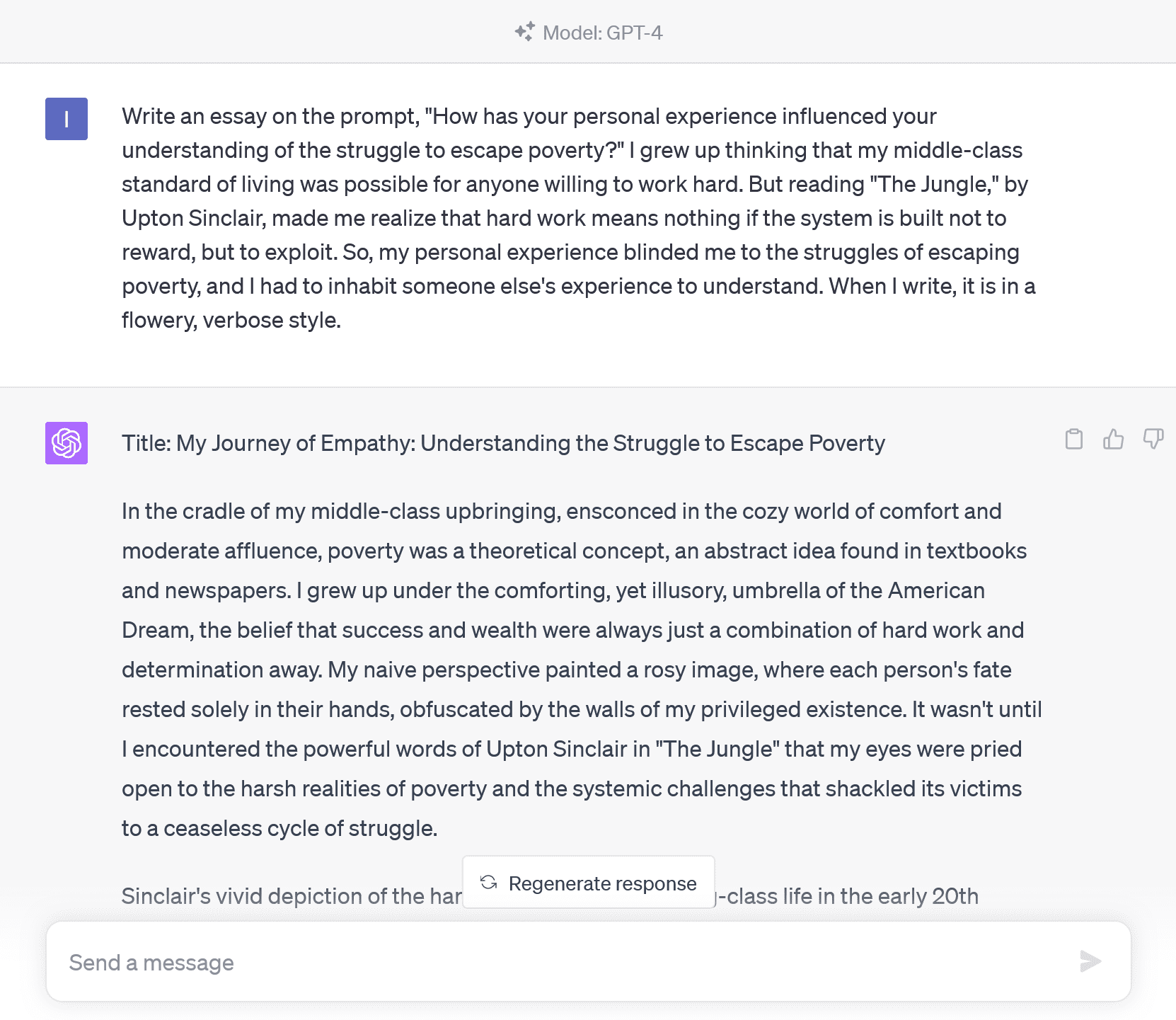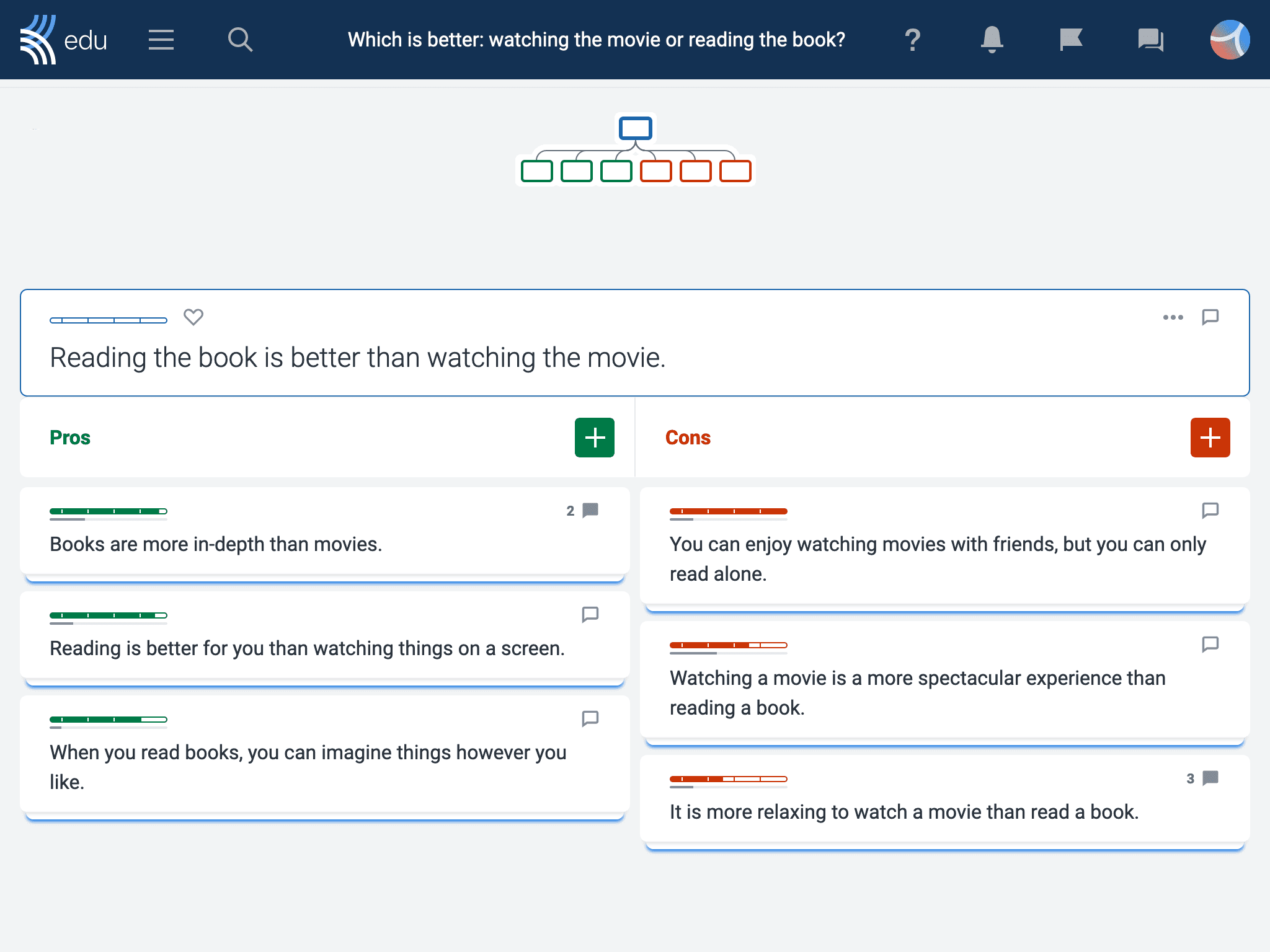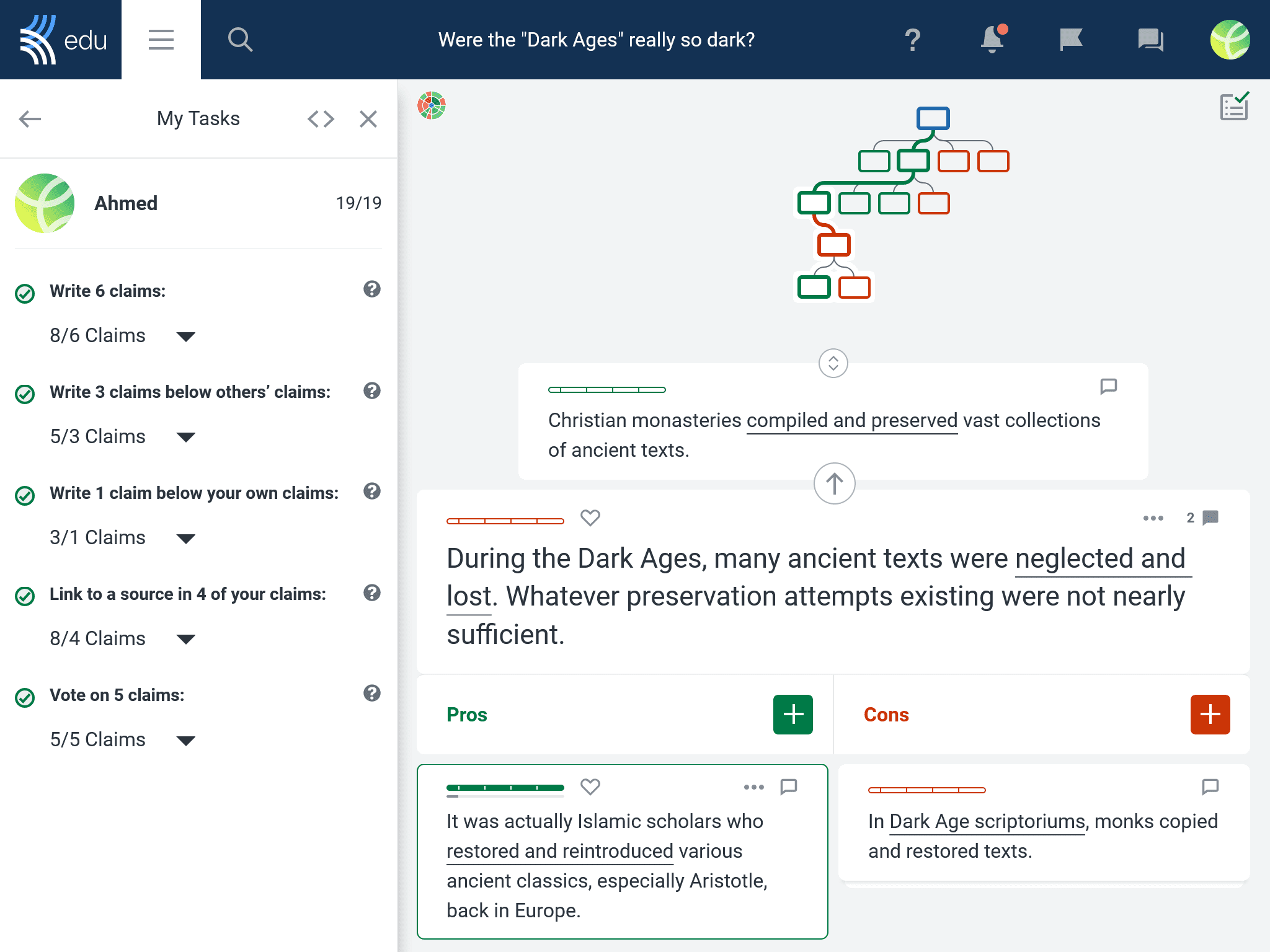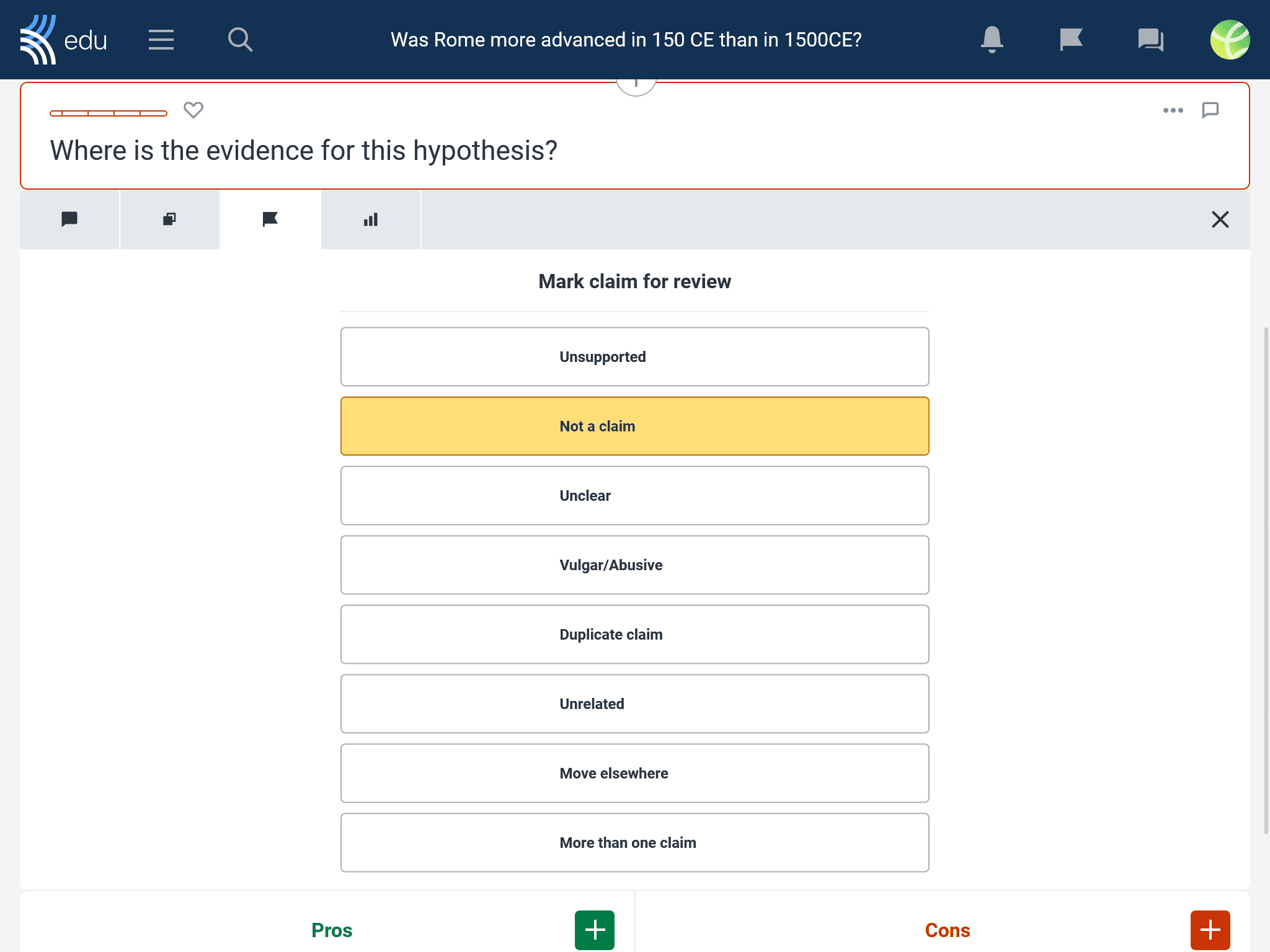“How to teach students to think” has always been one of the trickiest yet most foundational problems in education. Now, with AI increasingly able to do our thinking for us, that thorny question is even more difficult to grasp. It’s clear, though, that part of solving the latest version of this age-old problem is to create AI-proof assignments. Fortunately, Kialo Edu can help.
Amid the scramble to cope with one of the most disruptive technologies to ever emerge, educators are already rising to the challenge. With this in mind, here’s a picture of the current landscape and its impact on education, along with some concrete ideas for how you can use Kialo discussions to AI-proof your classroom.
Why is it so hard for teachers to create AI-proof assignments?
It seems like today’s educators have to wear many more hats than their predecessors of yore. In addition to teachers, they must be social workers, data analysts, curriculum specialists, and, increasingly, technology buffs.
Especially with AI advancing at a sci-fi–like pace, it’s important to understand the cutting edge so that it doesn’t slice right through your class’s academic integrity. Unfortunately, that edge might be sharper than you think.
Educators must reckon with a new reality, where the latest AI chatbots are capable of answering just about any writing prompt — even those you might have thought to be inventively impervious.
Just search “AI-proof assignments,” and you’ll find a growing number of articles written by veteran educators who, for all their pedagogical expertise, simply do not grasp AI’s capabilities and students’ ingenuity in harnessing them. As a result, most educators have little inkling of just how many students are using ChatGPT to cheat.
To get a sense of how well ChatGPT 4 can tackle these other ideas, let us test a popular example of an allegedly AI-proof prompt: “Write a reflective essay on how your personal experiences have influenced your understanding of the social issue/topic discussed in class.”
Here we can see that ChatGPT has been studying hard for the Turing test, as not even personal essays are immune to the powers of the latest AI. And keep in mind that these chatbots will only continue to get better!

As it stands, only topics such as local matters and current events can hope to avoid the reach of AI chatbots’ capabilities, and even then there are some significant caveats.
Big-city happenings and prominent local organizations will likely have too much of a web presence to go unnoticed by AI. Likewise, AI chatbots are also likely to have something to say about longstanding news stories, like the global refugee crisis or climate change.
So, what can educators do? You might try beating technology by sidestepping it entirely, with in-class handwritten essays or oral exams. Project-based learning also helps ensure that students are doing some of their own thinking, even if it might be bolstered by AI.
Of course, you might also want to consider Kialo Edu, whose innovative argument-mapping structure can provide you with a bundle of AI-proof assignments for in-class activities, homework, or full-on assessments.
AI-proof assignment ideas to prevent student cheating

As it happens, many of Kialo Edu’s core advantages are also advantages against AI-generated content. The platform’s layout, features, and the collaborative environment can all help to ensure that students are using their own flesh-and-blood brains to engage with the assignment. Here are some of the ways you can counter students using AI in their work on Kialo Edu!
1. Have students participate in a Kialo discussion to break down complex arguments through reasoning
One of the main advantages of Kialo Edu is that it prompts students to break down complex arguments into digestible units. Students can then structure these arguments into logical, visually intuitive lines of reasoning. Thus, the compartmentalized nature of claims in Kialo Edu discussions means that students can’t just copy-paste AI outputs into the platform.
While students could still use AI to help generate their points, they are nevertheless obliged to analyze the output themselves in order to pick out discrete arguments. Furthermore, while AI outputs are strictly linear (as is all writing or speaking), Kialo Edu’s visual format encourages students to generate a multilateral discussion. This means that when participating in a Kialo Edu discussion, even AI-happy students will have to exercise — gasp! — their own independent reasoning skills.

Moreover, the collaborative nature of Kialo Edu can also help to prevent students from relying on AI. When students critique and respond to one another’s work, they may develop a sense of ownership over their own ideas, which can discourage them from turning to AI in the first place.
To help you get started, you can try out a ready-to-go Kialo Edu discussion on a curricular or otherwise interesting topic in our library of debate topics! You could even hold a discussion on AI with your students!
2. Task students to make specific contributions in discussions that don’t depend on AI
Give students Tasks and direct them to make specific contributions that are more difficult to generate with AI. For instance, you can oblige students to cite sources for their claims or to respond to others’ arguments rather than simply build on their own.

3. Have students flex their mental muscles and vote on claims in a Kialo discussion
You can ask students to vote on claims as an activity during the discussion or as a follow-up. In doing so, students consider arguments for themselves and should have little temptation to involve machine learning to the detriment of their own.

To make the voting activity more substantive, you might even direct students to leave comments that explain why they voted a certain way on a claim. Plus, seeing which claims students rate as least or most impactful can also function as an excellent formative assessment!
4. Conduct a live discussion follow-up to organically reflect on the discussion
After finishing a discussion on Kialo Edu, or studying one created by a teacher, students can follow up by discussing the discussion! While the day may come when even our live conversations aren’t safe from AI intrusion, there’s no need to worry for now. Some questions to ask students include:
- What claims in the discussion did you find most convincing or important?
- What claims did you find hardest to refute?
- What claim was most difficult for you to write?
- Do you think that the top-level claims do a good job of representing the main arguments? If not, what would you do differently?
- Are there any other claims that you think could be improved? How?
- What point of view do you think is better represented in the discussion?
5. Ask students to reorder claims in a discussion to edit its structure
To launch this activity, you can have students work in a frenzy to purposely create a disorganized Kialo Edu discussion. Or create your own mess! Either way, then comes the fun part: Ask students to edit and/or reorder the claims into a pristine argument map, with focused claims, a sound logical structure, and reliable, well-sourced arguments. There’s little room for AI in this one!
6. Have students go through individual claims in the discussion and flag problematic ones
For a quicker, simpler version of the “reorder claims” exercise, start the same way: with a mess. Student- or teacher-created claims will both do just fine.
Then, ask students to use the Mark Claim feature to identify how each claim might be improved. Add a source? Split it up into two claims? Move it to a more logical position within the discussion? Just make sure the “vulgar/abusive” mark doesn’t have any reason to appear as well!

Looking forward to a future with AI in the classroom
Though AI is already making its way into many industries, rest assured that we’re still human over here. We at Kialo Edu are also doing our best to navigate this watershed moment in human history. We’re constantly thinking about how to best equip students for a future that is more and more difficult to imagine.
One thing seems almost certain, though: AI will play no small part in shaping it. That’s why we’re here to help educators roll with punches and ensure that we can all still have a human discussion. If you have any of your own ideas for AI-proof assignments on Kialo, please let us know on social media, or at feedback@kialo-edu.com!

